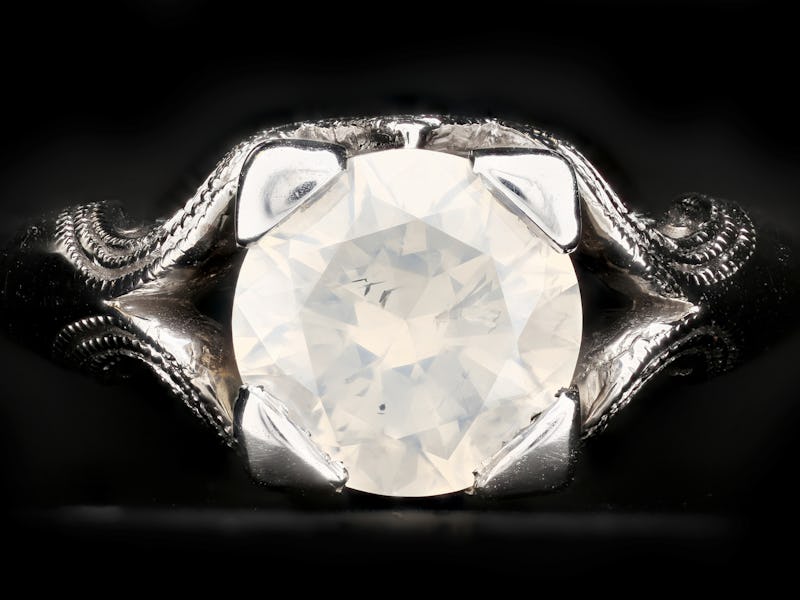Diamonds Are Fragile Pebbles That Won't Last Forever
Destroying a diamond is a lot easier than you think.

“A diamond is forever,” went the famous De Beers ad copy in 1947, now a cliché.
But it’s not true, of course. Basic grade-school intuition tells us that diamonds must not be forever on some time scale. But how long? And under what conditions can you speed up the destruction of a diamond?
There’s more than one way to off a diamond. And some are easier than you’d think.
Crush it
A diamond is one of the hardest materials on the planet, but it’s not indestructible. Due to this property, it’s not easily scratched — but a diamond is still vulnerable to chipping and breakage. Once a diamond is broken, it cannot be repaired, only cut into a smaller jewel.
It’s relatively easy to smash a diamond into a million bits — watch a middle-aged Australian scientist do it with a hammer:
This option doesn’t destroy the diamond at a chemical level; it merely breaks down a larger crystal into several smaller ones. If you want to fundamentally kill a diamond, you’re going to have to work a little harder than pulverization.
Heat it
Diamond and graphite are both crystals of pure carbon. They differ in only their structure — the configuration of their atoms. At normal temperatures and pressures on the surface of the Earth, interestingly, graphite is more chemically stable than diamond.
This means that, on a long enough time scale, diamonds will degrade into graphite. It takes an enormous amount of energy, however, to break the chemical bonds in a diamond so that it can reform as graphite. As a result, the degradation under normal atmospheric conditions takes place so slowly — over billions of years — that it’s negligible in any time frame relevant to human existence.
Imagine the degradation of a diamond like falling down a pair of holes, writes Christopher Baird, a physics professor at the University of Massachusetts Lowell, on his blog:
“The situation is somewhat like standing at the bottom of a small hole. Next to your hole is an even deeper hole, but a wall separates you from the deeper hole. You don’t just fall into the deeper hole, because there is a wall in the way. But if you get enough energy to jump over the wall, you will fall into the deeper hole. The first hole is like the energy state of diamond and the deeper hole is the energy state of graphite. When you heat up diamond or bombard it with ions, the atoms gain enough energy to pop up over the energy barrier and reconfigure to graphite.”
When a diamond gets really, really hot — say, when it is used as a cutting edge to drill through very hard material — the diamond degrades much faster and can flake off as graphite.
Burn it
Diamonds are made of carbon, so they — like everything else made of carbon — should burn, right? And indeed they do.
The reaction needs more oxygen than is readily available in the atmosphere, but place a diamond in pure oxygen gas (or liquid oxygen) and the heat from a regular blowtorch will be enough to set it ablaze. The end result? No more diamond, just plain ol’ carbon dioxide.
Irradiate it
Researchers at Macquarie University in Australia published a paper in 2011 proving that diamonds exposed to intense UV radiation will simply evaporate.
This process, like the degradation of diamond into graphite, happens at an imperceptible rate under normal environmental conditions. Even under very bright sunlight or in a UV tanning bed, it would take billions of years for a diamond to be visibly affected.
But under high levels of radiation in a lab setting, pockmarks appear in the diamond within just a few seconds. If you happen to have an easy source of intense UV light, evaporating diamonds would be a pretty cool party trick.